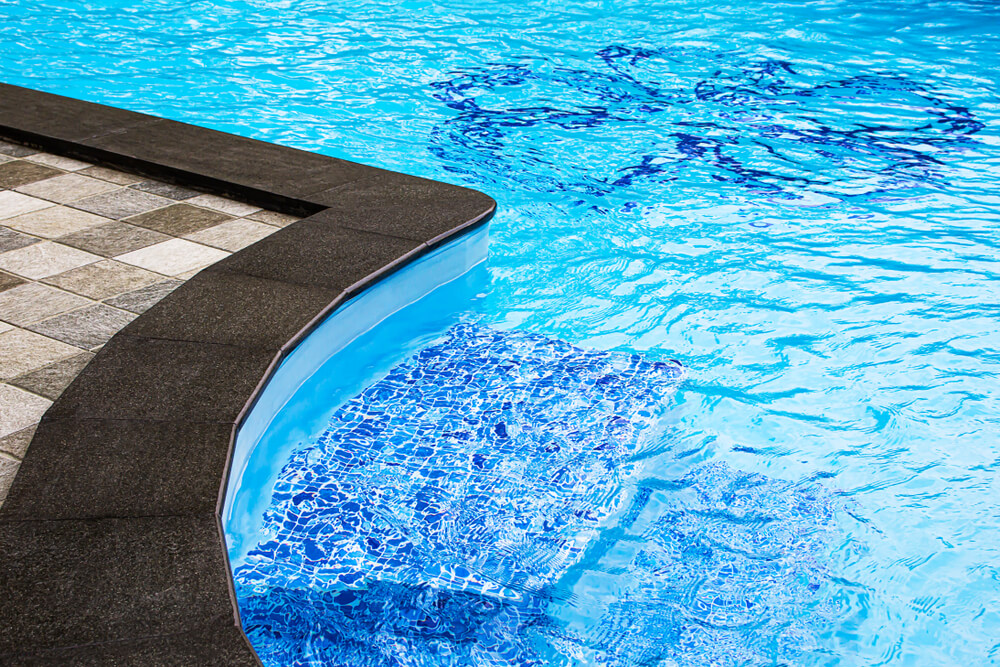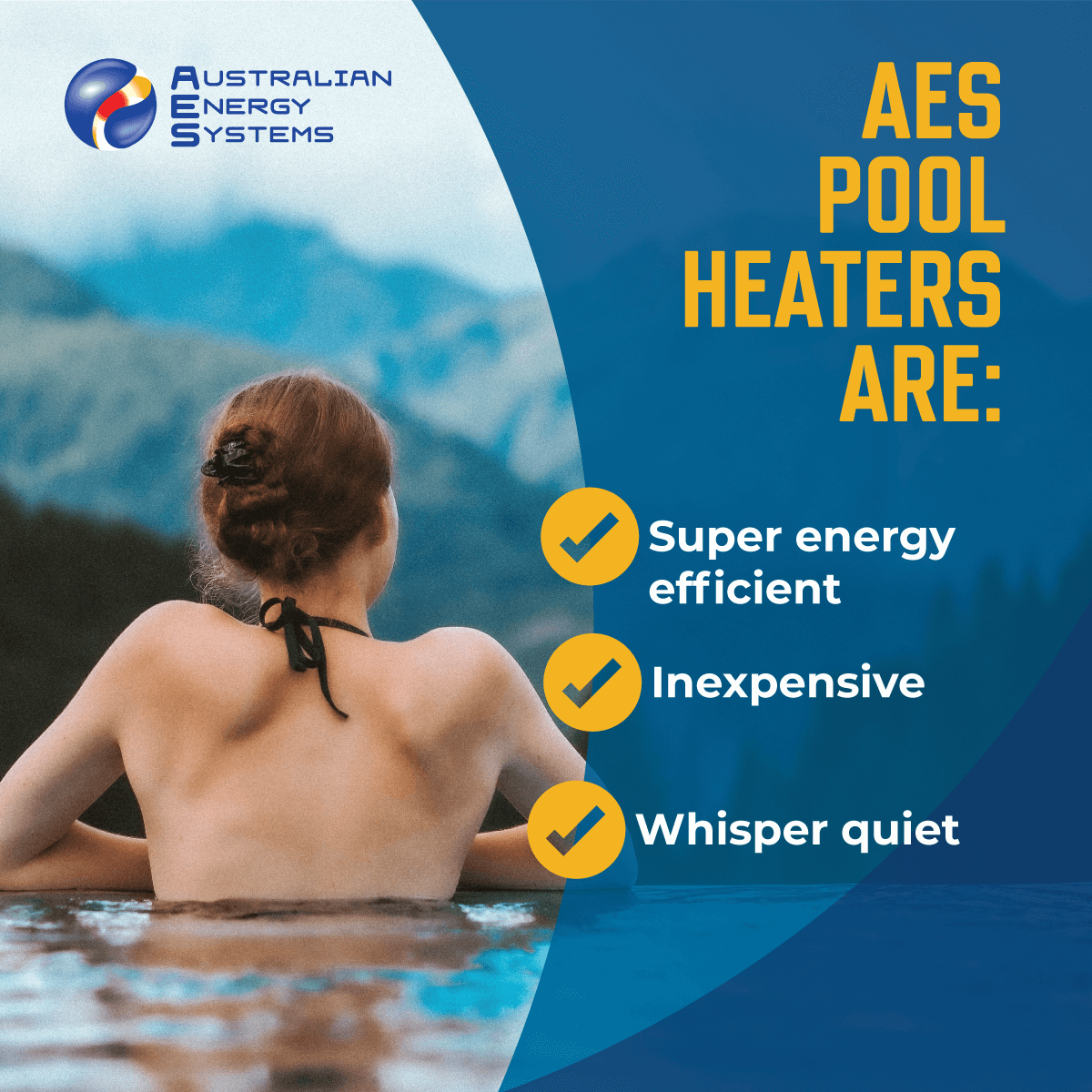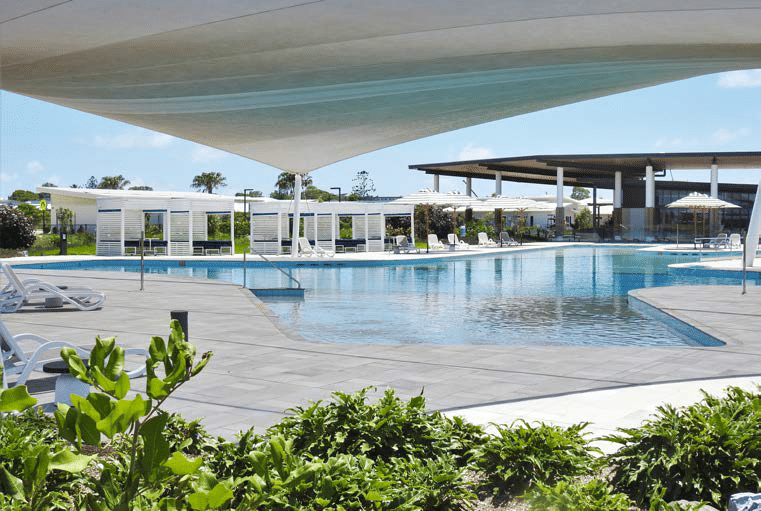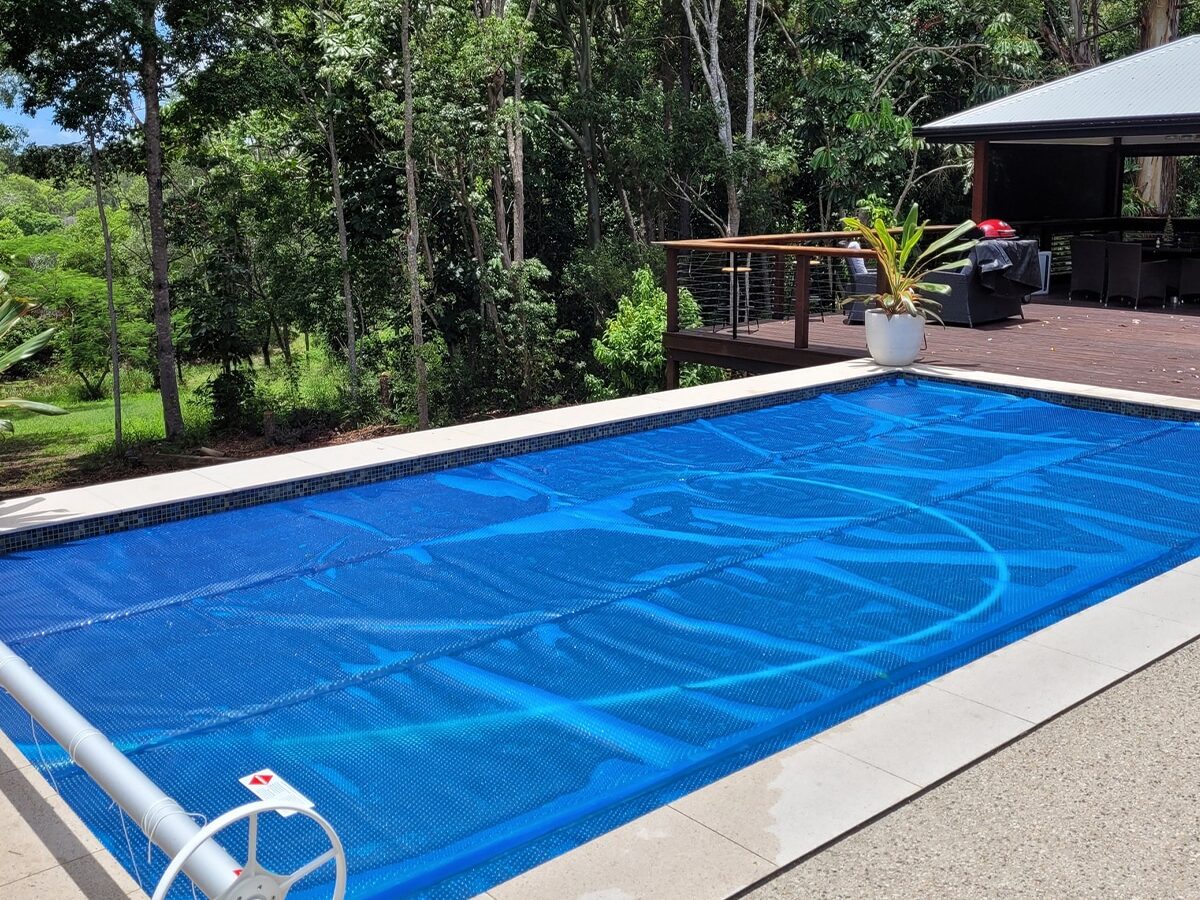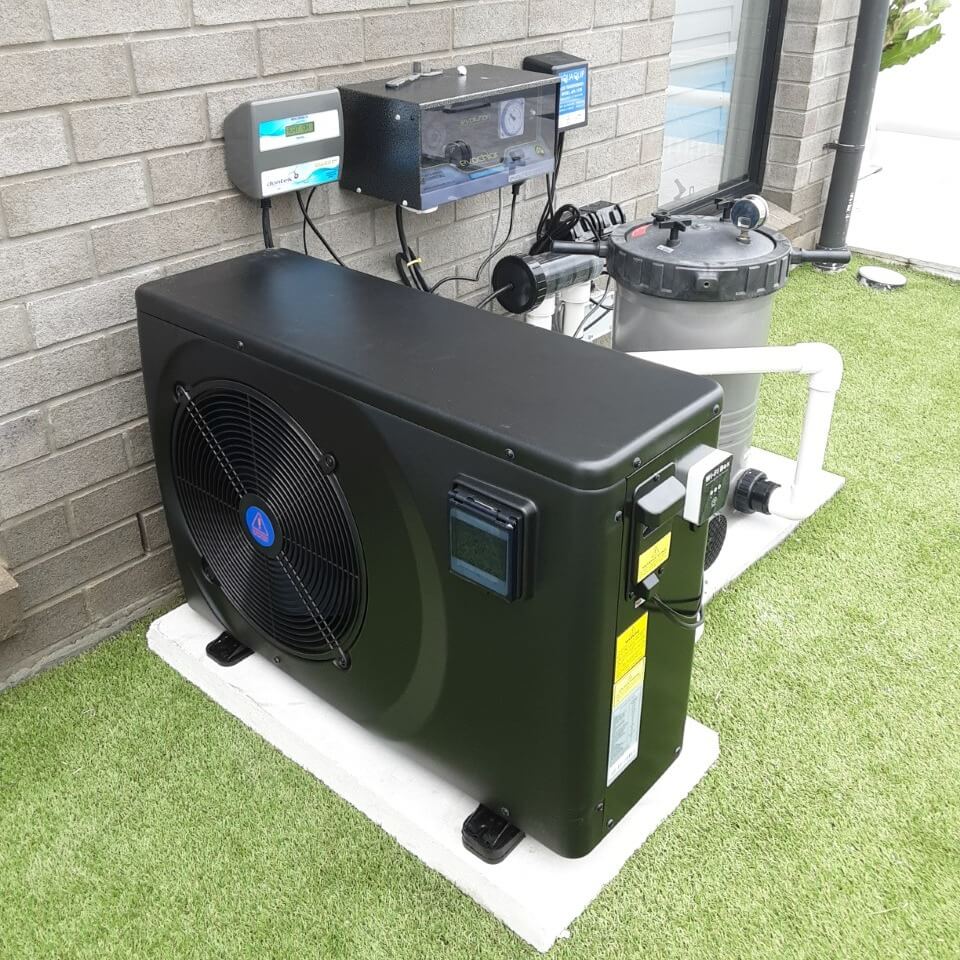Pools can be an expensive beast when you’re constantly topping them up and trying to keep them warm, which is why a pool blanket is a crucial element for every pool. Liquid covers are an economical, invisible way to keep costs down without ruining the aesthetic of your backyard.
AES Pool Heating Tweet
The pool is the hero of any Aussie backyard, especially during our spectacular summer season. One of the easiest ways to keep your pool looking and operating its best year-round is to invest in a pool cover (also called pool blankets). A cover reduces water evaporation on sunny days and loss of heat when the nights are cooler.
Table of Contents
Pool covers are practical, cheap and even invisible
First-time pool owners are often shocked by the amount of water lost to evaporation. Your pool can lose more than 2cm from its surface each week, and the endless top-ups can add significantly to your water bill. You’ll also need to rebalance the pool chemicals more often, adding to your ongoing expenses.
Pool covers also keep costs down if you heat your pool, because your heating system (whether it’s solar pool heating, an electric heat pump or a gas heater) won’t have to work as hard to maintain the pool’s temperature.
For home and commercial use, there’s a range of pool cover options – including blankets of varying thicknesses and liquid covers – all of which have their range of benefits.
What’s a liquid pool cover and how does it work?
Unlike physical pool blankets, liquid pool covers are an ultra-thin, invisible barrier made of fatty alcohol that sits on top of your pool’s surface. When poured into your pool at the right percentage, the molecules come together over the top of the water to form a complete ‘blanket’ and reduce evaporation by about 30%.
One of the reasons our customers like liquid covers is because there’s no unsightly pool cover in their backyard (we all like the sparkle of water in the sun!) and you can dive right in without the hard work of peeling back a blanket.
Its flexibility gives liquid covers a range of advantages:
- The same bottle can be used for both pools and spas
- It works 24/7, even while you’re swimming
- The liquid disperses to fit the shape of your pool (ideal for odd-shaped pools, such as kidney shapes)
- It won’t detract from the visual appeal of your pool
- Liquid covers are safe for kids and pets
- The liquid is designed to work with a pool’s filtration system, so it won’t clog your system
How do I know if a liquid pool cover is right for my pool?
Honestly, liquid pool covers suit every pool! It’s a great way to ‘test the water’ (pun absolutely intended) if you’re new to using a pool cover.
That said, you might find a traditional pool blanket is more up your alley depending on your location, your backyard and how you use your pool.
Here are some of the key differences between liquid pool covers and pool blankets:
- Liquid pool covers have a more cost-effective outlay. Depending on the size of your pool, you can get a few doses from each bottle. We recommend HeatLoc liquid pool cover because it lasts 30 days, whereas some other brands need to be added much more frequently, even daily. While it’s an ongoing cost compared to the one-off outlay of a pool blanket, you also have to consider how long a pool blanket lasts before it needs to be replaced.
- Liquid pool covers are more visually inviting. Liquid covers like HeatLoc are invisible to the eye, so it’s not an eyesore in your backyard. It also has no scent.
- HeatLoc remains in place while you swim. The fatty molecules will move around you to re-form their protective barrier as you swim, which protects your pool 24/7 compared to a blanket that’s removed for several hours a day while you’re swimming.
- Wear and tear isn’t an issue. Liquid blankets don’t wear out or look sun-bleached the way physical blankets can. Prolonged exposure to the elements can eventually lead to brittleness, tearing and fading.
- The liquid moulds your pool shape. While pool blankets can be cut to the shape of a kidney pool, we know from experience that it’s a tedious job to roll and unroll a cumbersome shape each time! Liquid pool covers make protection a non-issue for odd-shaped pools.
- A physical blanket might be a better option if you live in a cooler climate. Due to the thicker nature of a physical blanket, it can provide up to 25% more protection from heat loss. If you live in a cooler region, such as Victoria or South Australia, you might opt for a thicker cover to retain more heat – especially if you’ve invested in pool heating.
- Decide whether you like to scoop or sweep. If your pool collects a lot of debris, it’s going to fall into the pool with a liquid cover. A physical pool cover will protect your pool from leaves and branches that you’ll need to remove before or as you roll it up.
Getting your first pool cover
We always recommend protecting your pool’s surface to keep costs down, since you want to enjoy your pool without worrying about the dollars and cents.
You can find out more details about the types of pool cover options here. Our team are happy to help if you have questions or need advice on choosing the right one for your pool.

